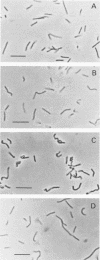Abstract
The lytic action of glycerol and sucrose esters of fatty acids with different carbon chain lengths on the exponentially growing cells of Bacillus subtilis 168 was investigated. Of each series of esters, glycerol dodecanoate and sucrose hexadecanoate were the most active. Lysis at 1 h after the addition of 0.1 mM glycerol dodecanoate or 20 μg of sucrose hexadecanoate per ml was 81 or 79%, respectively, as evaluated by the reduction in optical density. During this treatment a great loss of viability occurred that preceded lysis. The results that were obtained suggest that autolysis is induced by these esters. The esters caused morphological changes in the cells, but a seeming adaptation of the cells to esters was seen.
Full text
PDF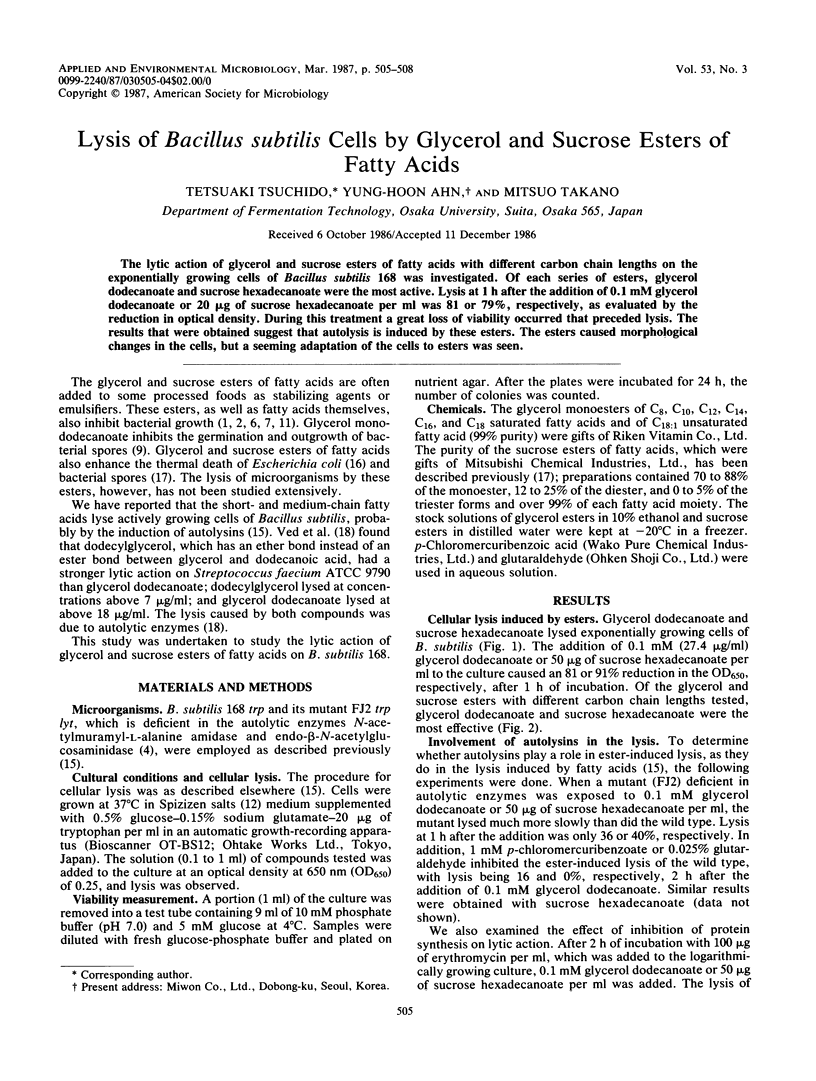
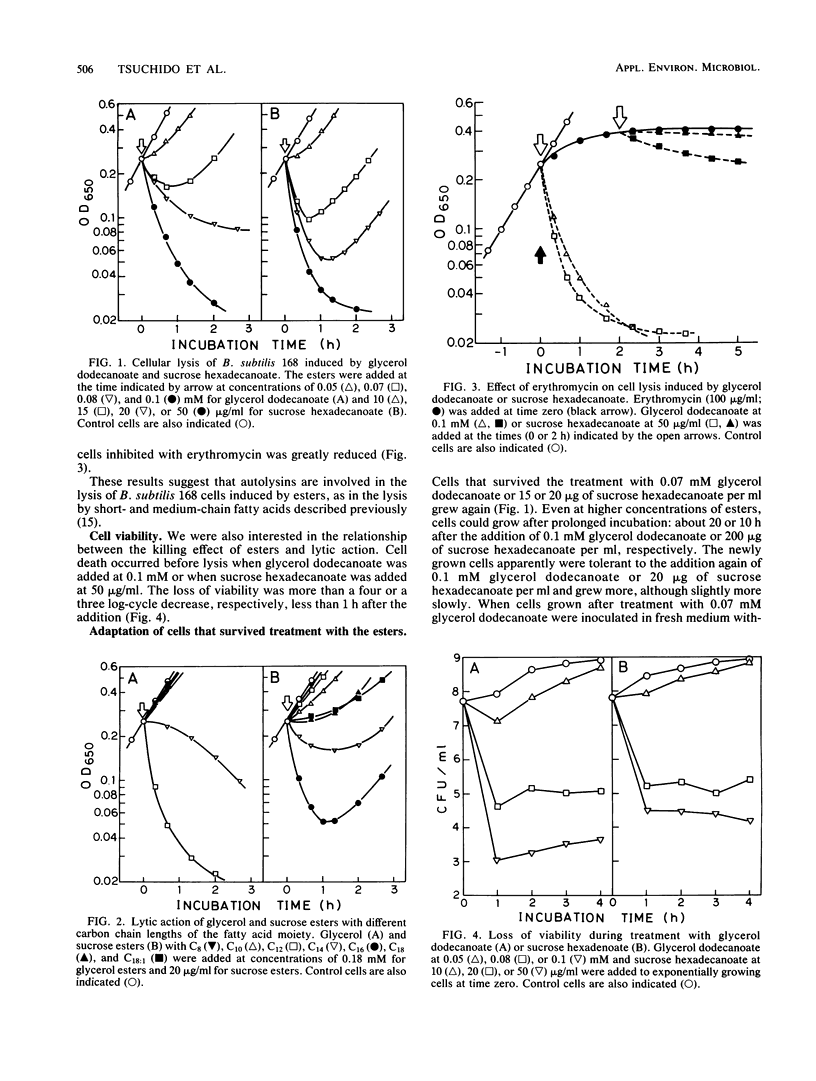
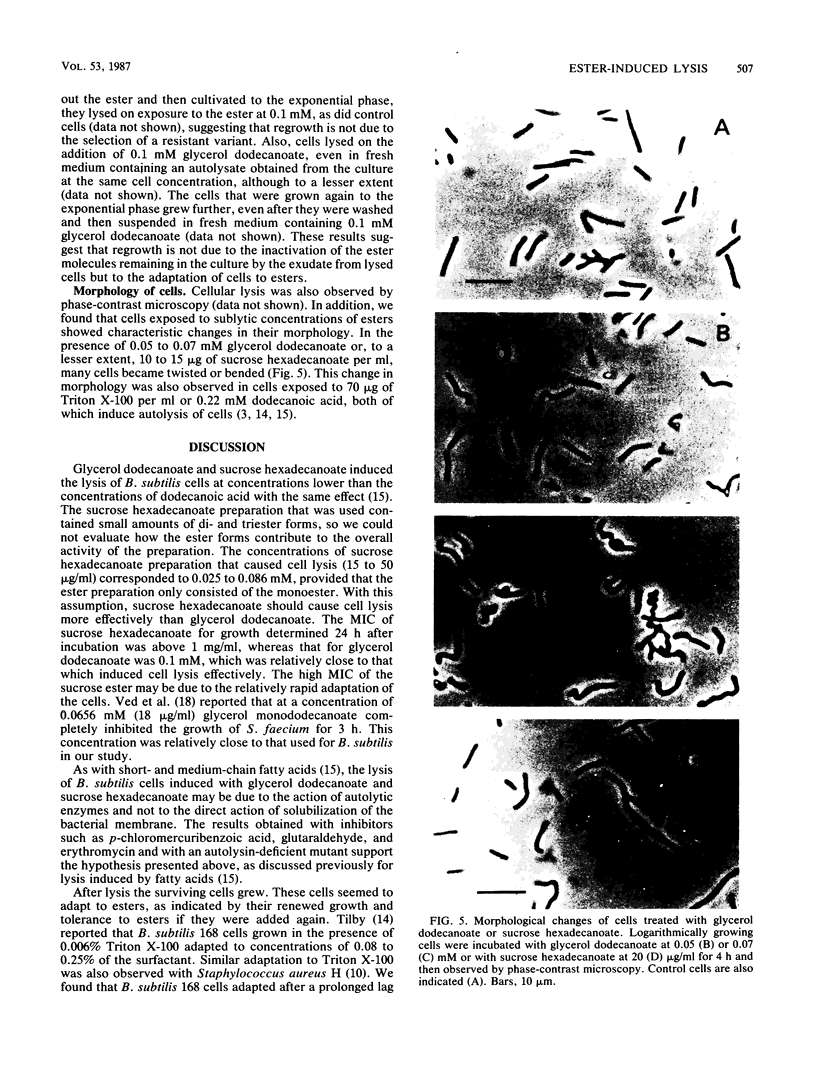
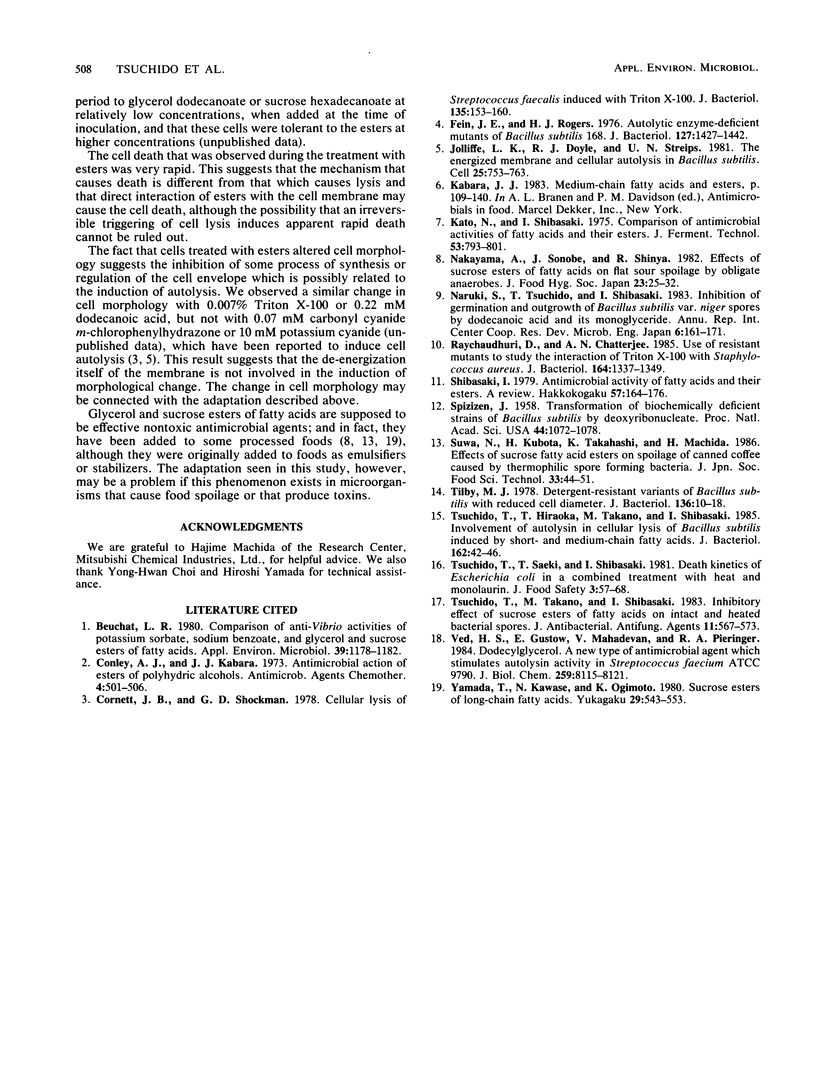
Images in this article
Selected References
These references are in PubMed. This may not be the complete list of references from this article.
- Beuchat L. R. Comparison of anti-Vibrio activities of potassium sorbate, sodium benzoate, and glycerol and sucrose esters of fatty acids. Appl Environ Microbiol. 1980 Jun;39(6):1178–1182. doi: 10.1128/aem.39.6.1178-1182.1980. [DOI] [PMC free article] [PubMed] [Google Scholar]
- Conley A. J., Kabara J. J. Antimicrobial action of esters of polyhydric alcohols. Antimicrob Agents Chemother. 1973 Nov;4(5):501–506. doi: 10.1128/aac.4.5.501. [DOI] [PMC free article] [PubMed] [Google Scholar]
- Cornett J. B., Shockman G. D. Cellular lysis of Streptococcus faecalis induced with triton X-100. J Bacteriol. 1978 Jul;135(1):153–160. doi: 10.1128/jb.135.1.153-160.1978. [DOI] [PMC free article] [PubMed] [Google Scholar]
- Fein J. E., Rogers H. J. Autolytic enzyme-deficient mutants of Bacillus subtilis 168. J Bacteriol. 1976 Sep;127(3):1427–1442. doi: 10.1128/jb.127.3.1427-1442.1976. [DOI] [PMC free article] [PubMed] [Google Scholar]
- Jolliffe L. K., Doyle R. J., Streips U. N. The energized membrane and cellular autolysis in Bacillus subtilis. Cell. 1981 Sep;25(3):753–763. doi: 10.1016/0092-8674(81)90183-5. [DOI] [PubMed] [Google Scholar]
- Raychaudhuri D., Chatterjee A. N. Use of resistant mutants to study the interaction of triton X-100 with Staphylococcus aureus. J Bacteriol. 1985 Dec;164(3):1337–1349. doi: 10.1128/jb.164.3.1337-1349.1985. [DOI] [PMC free article] [PubMed] [Google Scholar]
- Spizizen J. TRANSFORMATION OF BIOCHEMICALLY DEFICIENT STRAINS OF BACILLUS SUBTILIS BY DEOXYRIBONUCLEATE. Proc Natl Acad Sci U S A. 1958 Oct 15;44(10):1072–1078. doi: 10.1073/pnas.44.10.1072. [DOI] [PMC free article] [PubMed] [Google Scholar]
- Tilby M. J. Detergent-resistant variants of Bacillus subtilis with reduced cell diameter. J Bacteriol. 1978 Oct;136(1):10–18. doi: 10.1128/jb.136.1.10-18.1978. [DOI] [PMC free article] [PubMed] [Google Scholar]
- Tsuchido T., Hiraoka T., Takano M., Shibasaki I. Involvement of autolysin in cellular lysis of Bacillus subtilis induced by short- and medium-chain fatty acids. J Bacteriol. 1985 Apr;162(1):42–46. doi: 10.1128/jb.162.1.42-46.1985. [DOI] [PMC free article] [PubMed] [Google Scholar]
- Ved H. S., Gustow E., Mahadevan V., Pieringer R. A. Dodecylglycerol. A new type of antibacterial agent which stimulates autolysin activity in Streptococcus faecium ATCC 9790. J Biol Chem. 1984 Jul 10;259(13):8115–8121. [PubMed] [Google Scholar]



